Animals Around Us - CBSE Worksheets- 1 Solutions
| Table of contents |

|
| Q1: Fill in the Blanks |

|
| Q2: Match the following |

|
| Q3: Name the following |

|
| Q4: Crossword Puzzle |

|
| Q5: True or False |

|
| Q6: Answer the following questions |

|
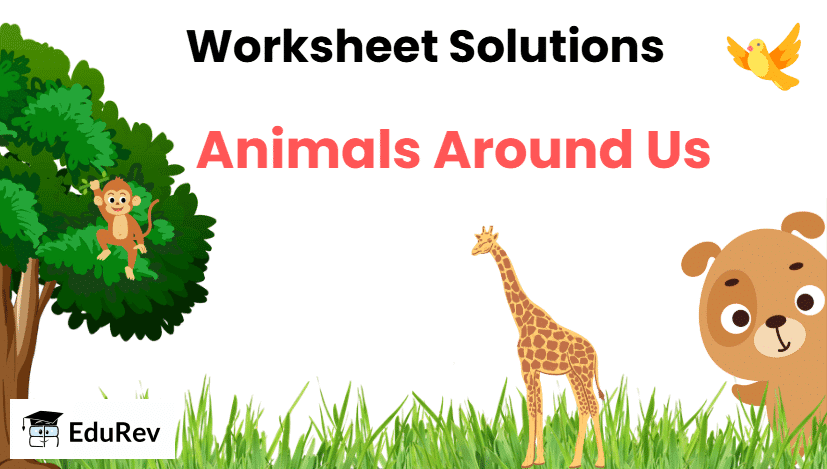
Q1: Fill in the Blanks
(Pick the correct word from the options in brackets)(i) Animals that animals can be kept at home are called _____ animals(domestic/wild)
Ans. Animals that animals can be kept at home are called domestic animals
(ii) _____ animals live in forests. (Wild/Domestic)
Ans. Wild animals live in forests.
(iii) Hens give us _____. (eggs/wool)
Ans. Hens give us eggs.
(iv) Insects have _____ legs. (six/four)
Ans. Insects have six legs.
(v) Cows give us _____. (milk/wool)
Ans. Cows give us milk.
(vi) Birds have _____ to fly. (feet/wings)
Ans. Birds have wings to fly.
Q2: Match the following
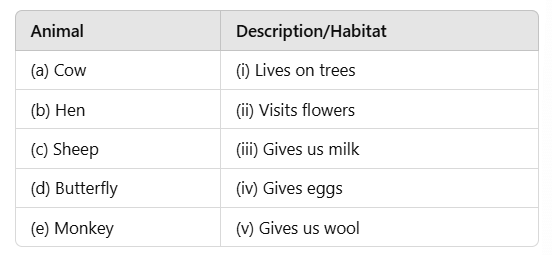
Ans: 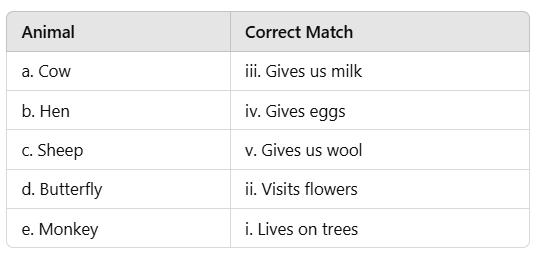
Q3: Name the following
(i) Two wild animals.
(ii) Two birds.
(iii) Two domestic animals.
(iv) Two pet animals.
Ans: (i) Tiger and Lion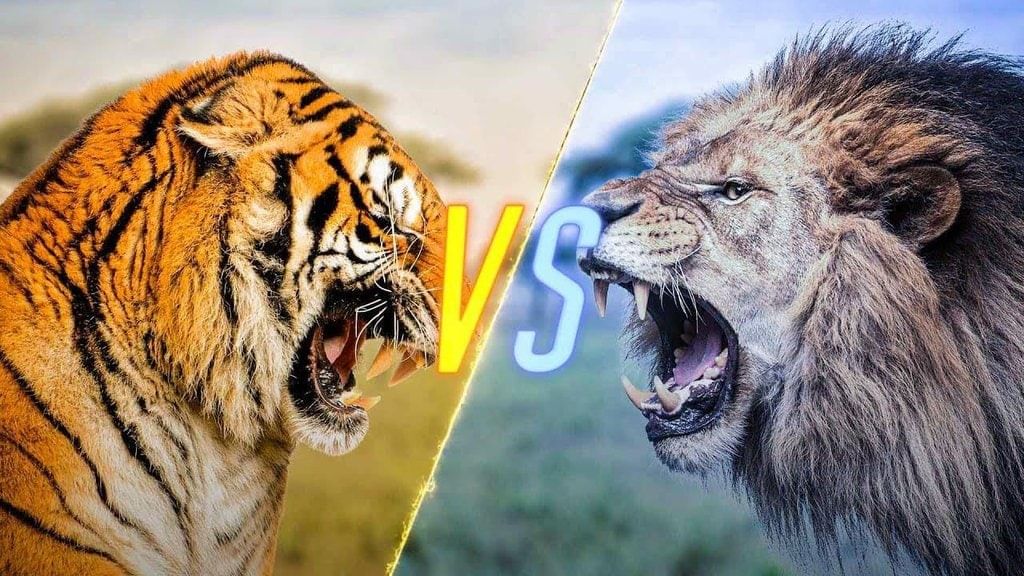
(ii) Sparrow and Pigeon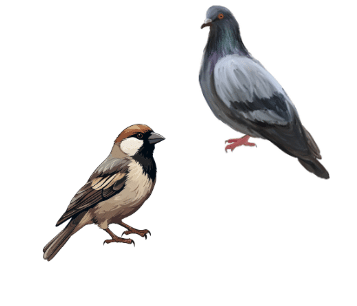
(iii) Cow and Donkey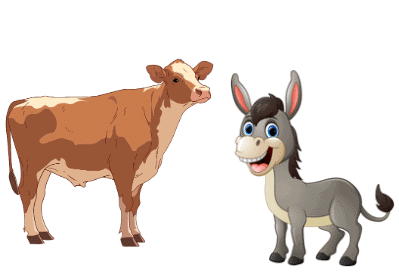 (iv) Dog and Cat
(iv) Dog and Cat
Q4: Crossword Puzzle
(Fill in the boxes using the clues given below to complete the crossword.)
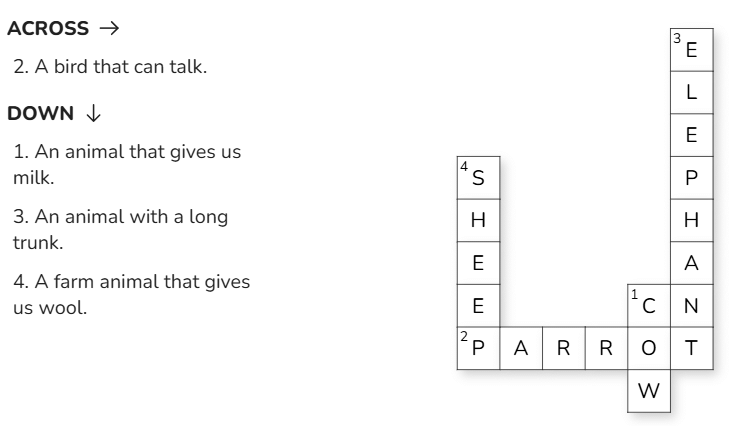
Q5: True or False
(Write TRUE or FALSE for the given statements)
(i) A mosquito has six legs.
Ans: True
Mosquitoes, like all insects, have six legs. This is a defining characteristic of insects.
(ii) A dog lives in water.
Ans: False
Dogs usually live on land, not in the water. They can swim for fun, like when you play in a pool, but they don’t stay in the water all the time.
(iii) A parrot is a pet animal.
Ans: True
Parrots are colorful birds that people like to keep in their homes as pets. They can learn to copy sounds and say words, which makes them fun pets!
Q6: Answer the following questions
(i) What is a wild animal?
Ans: Wild animals are animals that live in nature or forests (i.e., shelter is not provided by man) and are responsible for getting their own food and water. Examples include foxes, deer, lions, bears, and giraffes.
(ii) What are domestic animals?
Ans: Domestic animals are those that depend on humans for shelter, food, water, and general care. Examples include house cats, dogs, parakeets, cows, horses, sheep, and pigs.
(iii) Where will you find tigers and lions?
Ans: We can find tigers and lions in the forest; they are wild animals.
(iv) Do all animals eat only plants?
Ans: No, some animals eat plants, and some eat flesh.
(v) Name two birds that cannot fly.
Ans: Two birds that cannot fly are:
- Ostrich
- Penguin
|
33 videos|215 docs|44 tests
|
FAQs on Animals Around Us - CBSE Worksheets- 1 Solutions
| 1. What are some common animals found in our surroundings? |  |
| 2. How do animals contribute to our ecosystem? |  |
| 3. What should I do if I find an injured animal? |  |
| 4. How can we protect animals in our environment? |  |
| 5. What are some ways to educate children about animals? |  |





















